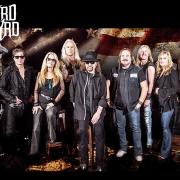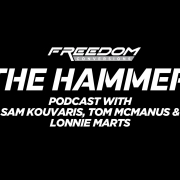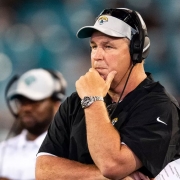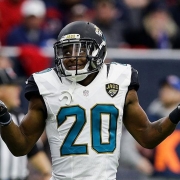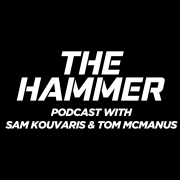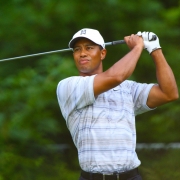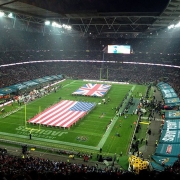Jaguars and Skynyrd a Natural Fit
Whoever thought of playing Lynyrd Skynyrd’s “Sweet Home Alabama” to kick off the fourth quarter at Jaguars’ home games was a genius. Whoever thought it was a good idea to stop that was something less than a genius. Maybe it didn’t seem “sophisticated” enough to somebody new to town. Or they wanted to be more “modern” and timely. And that’s all good. But Skynyrd is a part of who we are, and that’s not going to change. I’ve been to plenty of stadiums where the home team has some kind of “tradition” that makes no sense to the visitors.
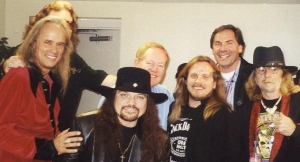 Because it’s not suppose to.
Because it’s not suppose to.
Playing Skynyrd at a Jaguars game is our own version of that. With all of the losing going on at the stadium in the past decade, it’s about the only fun fans were having at the game at all. That guitar lick by Ed King and Gary Rossington to start the music brought a cheer and a smile to anybody who was left at the game. Now that the team’s winning, playing Skynyrd should be part of the celebration.
I’m not even sure if the Jaguars are going to play “Sweet Home Alabama” at home games in 2018 but there’s no question that they should. The honoring of the military and the ringing of the bell between the third and fourth quarters is a noble endeavor. It’s the right thing to do. It absolutely has a place at every Jaguars game and if the right time is prior to the final quarter, that’s great.
Skynyrd also has a place at home games, wherever and whenever they want to play it. First quarter, start of the second half, it doesn’t matter. Somewhere during a Jaguars home game, some Skynyrd music should be playing.
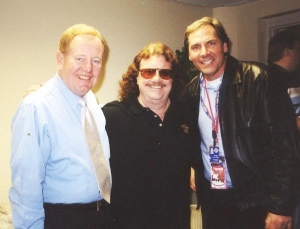 Nothing has defined Jacksonville more in the last 40 years (with all due respect to Fred Durst and Limp Biscuit) more than Skynyrd and the Jaguars. Cleaning up the air and getting rid of tolls are in the discussion but “the boys” from the Westside, both in the original band and the reunion version have always proudly told everybody they’re from Jacksonville. Waaaay before anybody anywhere thought the Jaguars in Jacksonville were a possibility. (Except possibly former Mayor Jake Godbold.) So you could say it was a natural to include some “local” music as part of the “game day experience.”
Nothing has defined Jacksonville more in the last 40 years (with all due respect to Fred Durst and Limp Biscuit) more than Skynyrd and the Jaguars. Cleaning up the air and getting rid of tolls are in the discussion but “the boys” from the Westside, both in the original band and the reunion version have always proudly told everybody they’re from Jacksonville. Waaaay before anybody anywhere thought the Jaguars in Jacksonville were a possibility. (Except possibly former Mayor Jake Godbold.) So you could say it was a natural to include some “local” music as part of the “game day experience.”
Any tailgate party at a Jaguars game has some Skynyrd music playing. One of their songs on any pregame playlist would be considered a local anthem of sorts.
Today’s (Sunday’s) concert as part of the band’s “Farewell Tour” should forever solidify the link between Skynyrd and the team. The Jaguars were part of the impetus to rename a street downtown after the band and to put up a mural depicting the legendary, and local rockers.
Johnny Van Zant and Rickey Medlocke were a big part of the announcement of the show here back in April. Both professed to be huge Jaguars fans and recently went on a tour or the stadium with the team’s long-snapper Carson Tinker.
While he was rehabbing his knee last season, Tinker worked on his guitar licks and was invited by Johnny and Rickey to play along on an acoustic version of “Sweet Home Alabama” right there in the stands at the stadium. (Although I sang with the band in the late ‘80’s at their first “reunion” at the Morocco Temple, I was still VERY jealous.) Carson held his own but told me, “I was hoping to get some of the lead in there but Rickey can REALLY play!” When he tweeted it out, Tinker called it his “dream.” Medlocke even had his bothersome thumb looked at by the Jaguars training staff during the tour. His thumb has bothered him for some while from holding a guitar pick in that hand forever.
Skynyrd’s connection to sports goes back a long way. Like any kids, they were involved early, with Ronnie being a pretty good baseball player. But he was also a poet, so songwriting and leading the band won out. Brother Donnie had a nice racquetball game in the ‘90’s when not on the road with .38 Special.
While the band has never performed at halftime of the Super Bowl (hmmm, there’s an idea) there is a connection between the band and the NFL that goes back a while. Skynyrd has been a part of the Super Bowl Saturday Night Special in the past. Eighteen years ago Skynyrd was part of a big blowout concert in Tampa Bay before the game and as usual, they brought the house down.
So it would be strange after all of the hype and the Jaguars involvement in Skynyrd’s final concert to not have them part of games. They’re fun, they bring some extra excitement, and perhaps most importantly, they’re ours.

